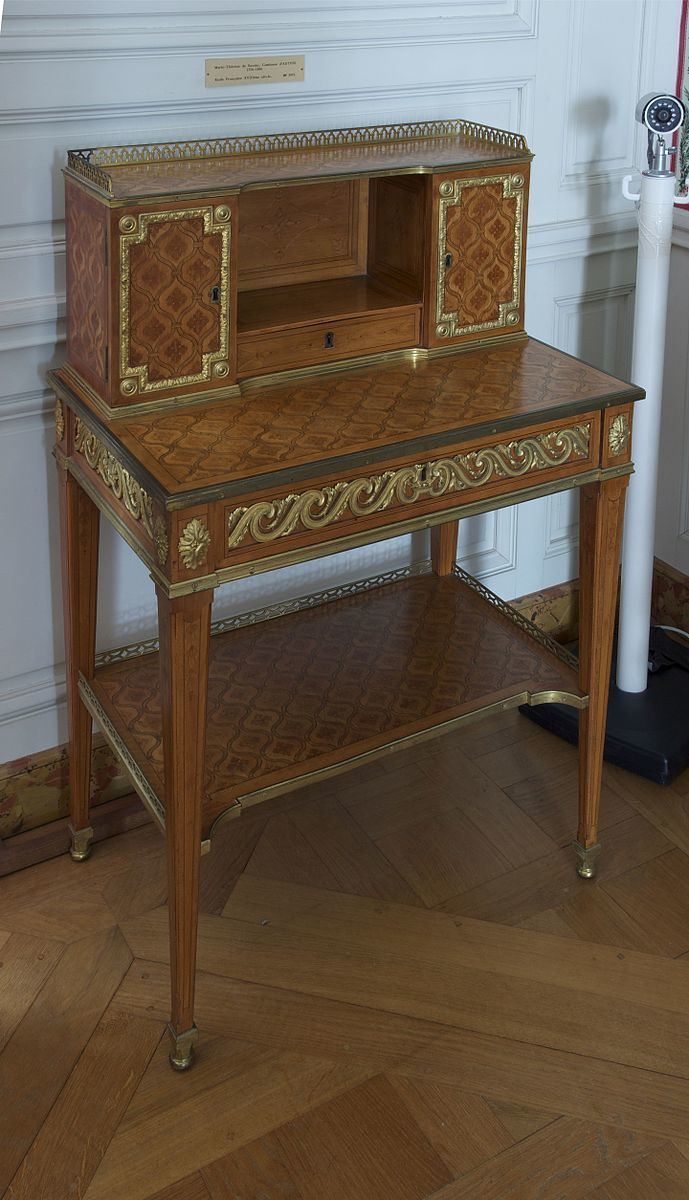 | ||
A bonheur du jour (in French, bonheur-du-jour, meaning "daytime delight") is a type of lady's writing desk. It was introduced in Paris by one of the interior decorators and purveyors of fashionable novelties called marchands-merciers about 1760, and speedily became intensely fashionable. The bonheur du jour is always very light and graceful, with a decorated back, since it often did not stand against the wall (meuble meublant) but was moved about the room (meuble volant); its special characteristic is a raised back, which may form a little cabinet or a nest of drawers, or open shelves, which might be closed with a tambour , or may simply be fitted with a mirror. The top, often surrounded with a chased and gilded bronze gallery, serves for placing small ornaments. Beneath the writing surface there is usually a single drawer, often neatly fitted for toiletries or writing supplies. Early examples were raised on slender cabriole legs; under the influence of neoclassicism, examples made after about 1775 had straight, tapering legs. The marchand-mercier Simon-Philippe Poirier had the idea of mounting bonheurs du jour with specially-made plaques of Sèvres porcelain that he commissioned and for which he had a monopoly; the earliest Sèvres-mounted bonheurs du jour are datable from the marks under their plaques to 1766-67. The choicer examples of the time are inlaid with marquetry or panels of Oriental lacquer, banded with exotic woods, with gilt-bronze mounts.
By the mid-1770s the bonheur du jour was being made in London, where it was simply called a "lady's writing-desk".
